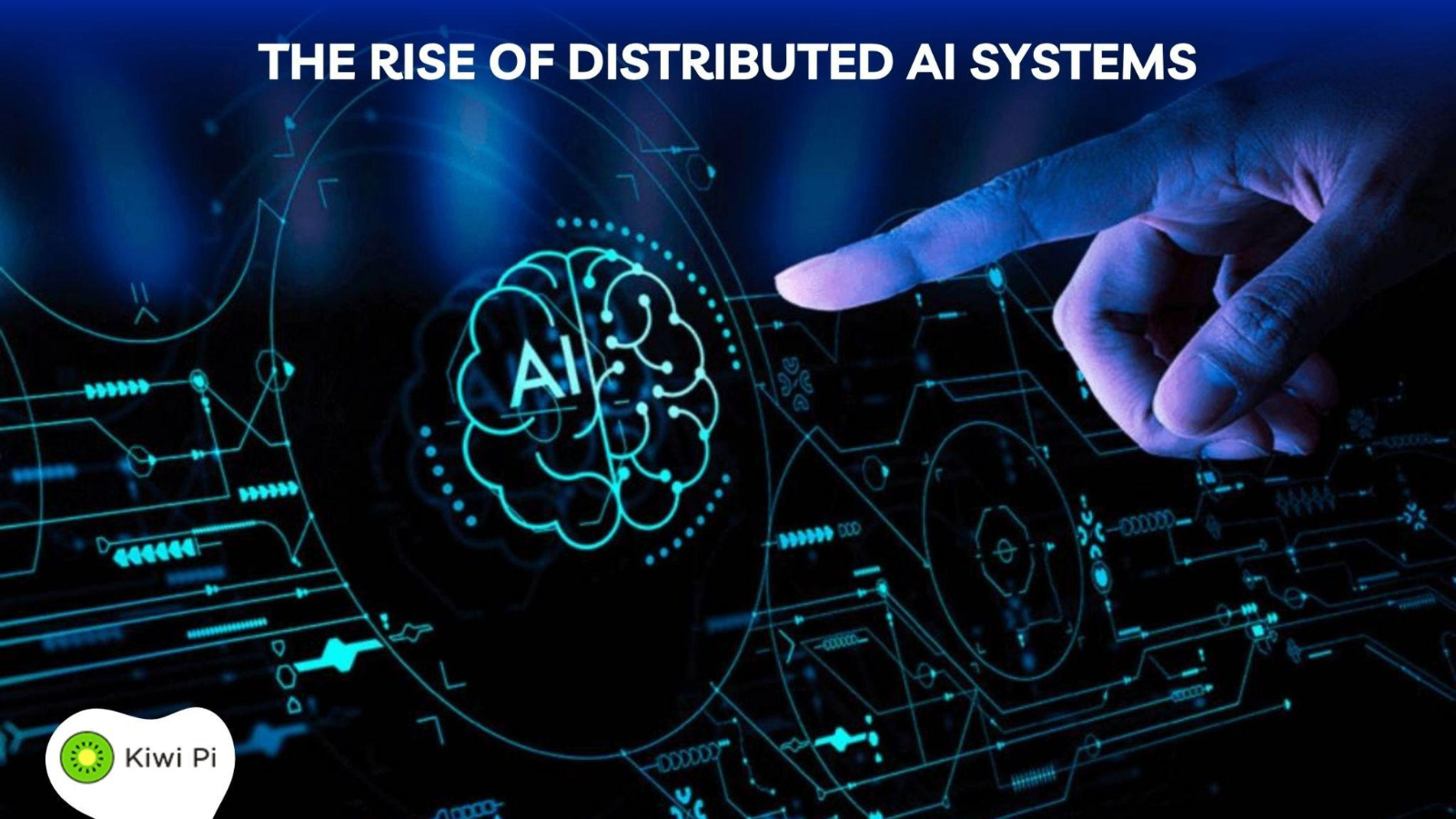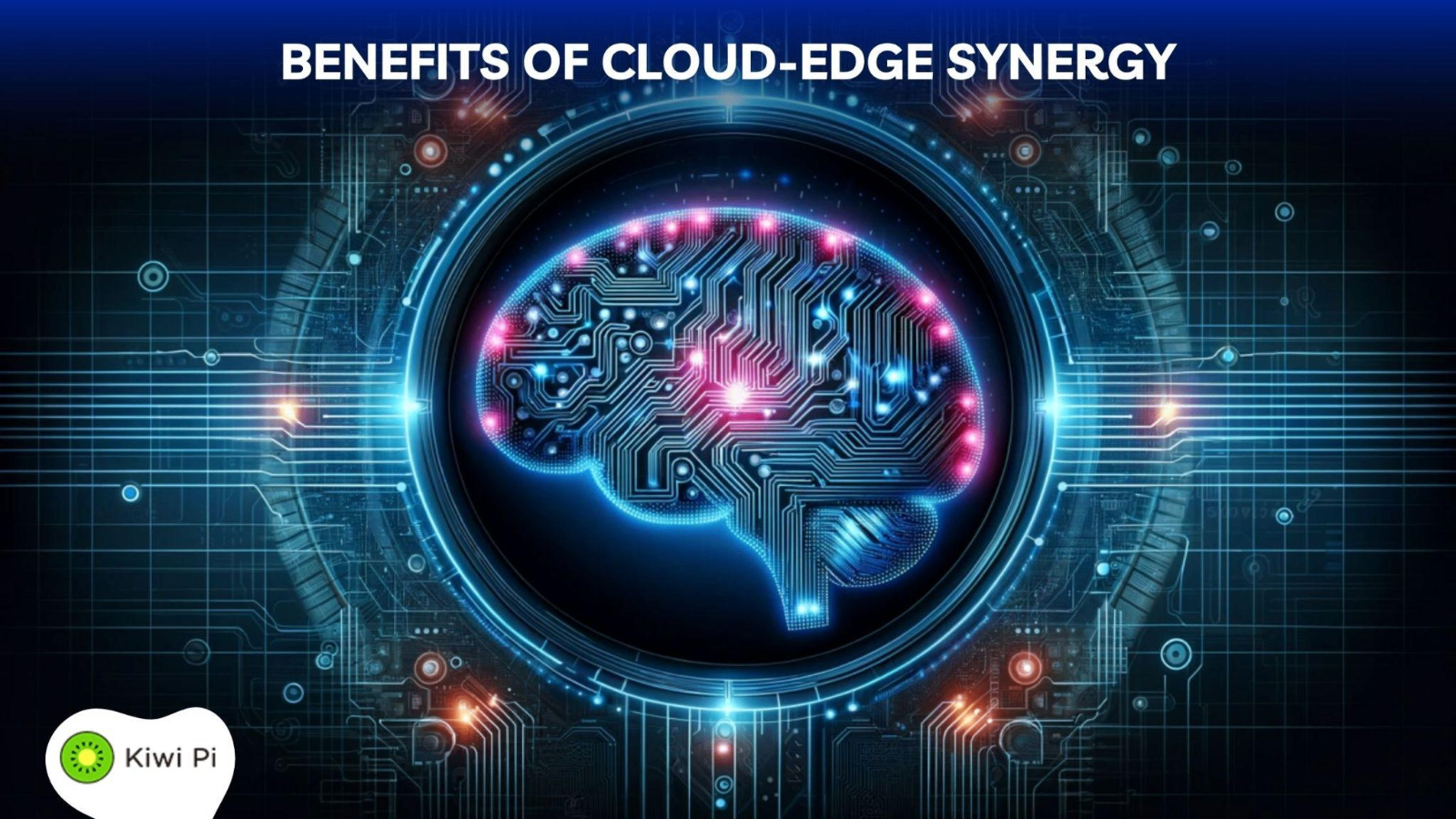
Solution
What Role Does Cloud Computing Have with Edge AI?
The Rise of Distributed AI Systems

A 2025 prediction notes that AI will no longer be hidden, as the true change is underway through distributed intel: this combines cloud computing and edge AI. This model is transforming vital sectors, such as healthcare and manufacturing, by enabling local and real-time decision-making while maintaining cloud-based monitoring. What is the relationship between edge AI and cloud computing? The latter acts as the anchor, as training and orchestrating are performed there, while interpreting and inferring occur at the localized level: edge AI computing. Kiwi Pi, the leader globally in regard to embedded computing technology, builds powerful platforms based on Rockchip that are intended to reinforce this change.
Edge AI vs. Cloud AI – What’s the Difference?
Understanding the concept of cloud computing about edge AI incorporates a difference between centralized and localized versus hybrid processing. For instance, the separation of concerns, the cloud is solely responsible for everything holistic, like performing extensive model training and data scrutiny, while the rest, edge AI, is managed in real time, situated ‘in vivo’ next to the data source. The edge AI domain, however, is a critical framework in need of being advanced for latency-sensitive regions such as healthcare and autonomous driving. Kiwi Pi employs Rockchip platforms to develop high-end edge computing systems, which facilitate the handling of processes at the local level promptly. Their integrated solutions allow firms from every sector to implement smart, scalable, industry-specific AI pipelines. For any enterprise grappling with edge versus cloud AI, Kiwi Pi provides the most dependable and quickest solutions.
The Cloud’s Primary Roles in Edge AI Architecture
The functions of cloud computing in edge AI incorporate consolidated model training, fleet management, and secure data aggregation. For instance, in kidney treatment systems, the cloud trains large models using hospital-grade datasets, securely containing the subsequently edited versions. It also oversees compliance controls alongside long-term storage. Coordination is crucial between cloud computing and edge AI. With over 16 years of building this ecosystem, Kiwi Pi integrates Rockchip-based mini PCs and all-in-one systems engineered for scalable AI deployments, powering this ecosystem. Their devices provide seamless integration of cloud assistance and edge intelligence for healthcare and industrial AIoT applications across the globe.
The Edge AI Role: Real-Time Action and Autonomy
AI at the edge heightens the precision of computations by mechanical devices driven by AI algorithms in real-time scenarios where every split second matters. While edge AI acts instantaneously during treatments, like during critical dialysis, cloud computing depends on remote data centers. Incision autonomy qualifies edge AI for lowered dependence on constant network connectivity, resulting in rapid, secure responses. They define an edge AI role, augmenting the cloud with local decision-making capabilities on the device itself. Kiwi Pi offers comprehensive embedded systems designed for such edge deployments. Their hardware, powered by Rockchip, is reliable and free of latency for AI applications in critical industries, making them a preferred partner for those requiring sophisticated, real-time edge solutions.
Rock Pi
The Rock Pi device has an NPU, Mali-G610 GPU, and octa-core ARM CPUs, which gives it a cutting-edge performance on Rockchip RK3588/RK3588S processors with an AI edge. This device is vital for robotics, smart factories, and AIoT since it offers real-time decision making, object detection, and autonomy. Kiwi Pi’s Rock Pi devices support 32GB RAM, can process 8K videos, and have rich I/O ports, which makes real-time, scalable AI processing possible. Visit kiwipi.com to find out more.
Cloud + Edge: The Hybrid AI Model
Intelligent systems of the future will rely on a fusion of edge and cloud hybrid AI models. The edge AI domain requires cloud computing for training, data management, and orchestration, whereas distributed systems focus on prompt decision-making. Consider renal monitoring systems: cloud models are responsible for detecting patterns, and pattern execution is assigned to edge devices. Such separation guarantees performance and resilience. Kiwi Pi equips the edge with solutions for hybrid AI through embedded computing systems based on Rockchip technology. Their devices for smart retail, intelligent healthcare, and industrial automation are ultra-scalable and integrate seamlessly with cloud ecosystems, excelling in balancing cloud and edge for maximum efficiency.
Benefits of Cloud-Edge Synergy

The synergy of cloud and edge AI offers enterprises optimized system performance and enhanced data privacy alongside system resilience. The cloud takes care of intensive computation and long-term analytics, while edge computing acts with real-time responsiveness and minimized latency. The synergy helps with the enhancement of smart AI applications in smart cities, logistics, and healthcare. The functions of cloud computing as they relate to edge AI include remote orchestration, compliance, and backup. Kiwi Pi’s Rockchip-based embedded solutions are tailored, purposefully designed for this dual architecture.
Challenges in Integrating Cloud and Edge AI
The flexibility provided by hybrid AI is appealing, but the complexities it introduces are not. There are heightened concerns of increased attack surface, device-cloud compatibility, and synchronization delays. What role does cloud computing have in this scenario alongside edge AI? It backs and governs, but it also needs to enable autonomous edge operation during outages. These concerns are solved by secure, interoperable embedded solutions from Rockchip, powered by Kiwi Pi. Their systems come with encryption protocols, flexible device management, and support for federated learning, which is ideal for reliable and security-centric environments. For AI networks that are built across cloud and edge ecosystems, resilient and scalable solutions are enabled through the hardware backbone provided by Kiwi Pi.
Real-World Use Case: Kidney Treatment with Cloud-Edge AI

The integration of edge AI and cloud computing saves lives, especially in the treatment of kidney diseases. Real-time alerts are issued and vitals monitored by edge devices, and long-term data is stored in the cloud while analyzing AI trends. This combination provides immediate services alongside in-depth insight. Cloud computing plays a role in AI orchestration by overseeing intelligence and providing order. Embedded computing solutions by Kiwi Pi are pivotal in supporting this dynamic, alongside rough pair aids.
Future Outlook: The Rise of Federated, Self-Optimizing Systems
Self-sustaining central systems that feature federated self-optimization for dynamic intelligence distribution are the new frontier for Edge AI computing. AI integrated with the cloud will evolve, wherein the cloud orchestrates while the edges become self-sufficient processors. Other fields will benefit from new technologies such as on-device machine learning and AI orchestration platforms powered by TinyML. Kiwi Pi with advanced Rockchip-powered hardware is already set to lead scalable AI applications. Their adaptable computing solutions range from smart agriculture to medical diagnostics. Being two steps ahead in the hybrid intelligent systems era is possible by using Kiwi Pi’s turnkey platforms tailored for next-gen AI.
Conclusion: Cloud and Edge — Not Either/Or, but Both
The decision to choose between cloud computing and edge AI technologies is long gone; now, both of them are essential. The functions that cloud computing performs on edge AI involve coordination, training, and compliance, while the edge takes care of speed, independence, and local decision-making. This merged model facilitates obtaining insights in real-time while maintaining control and privacy. Kiwi Pi understands the synergy. Their devices, based on Rockchip SoC, are perfect for smart cities, intelligent transportation systems, and even medical technologies.


